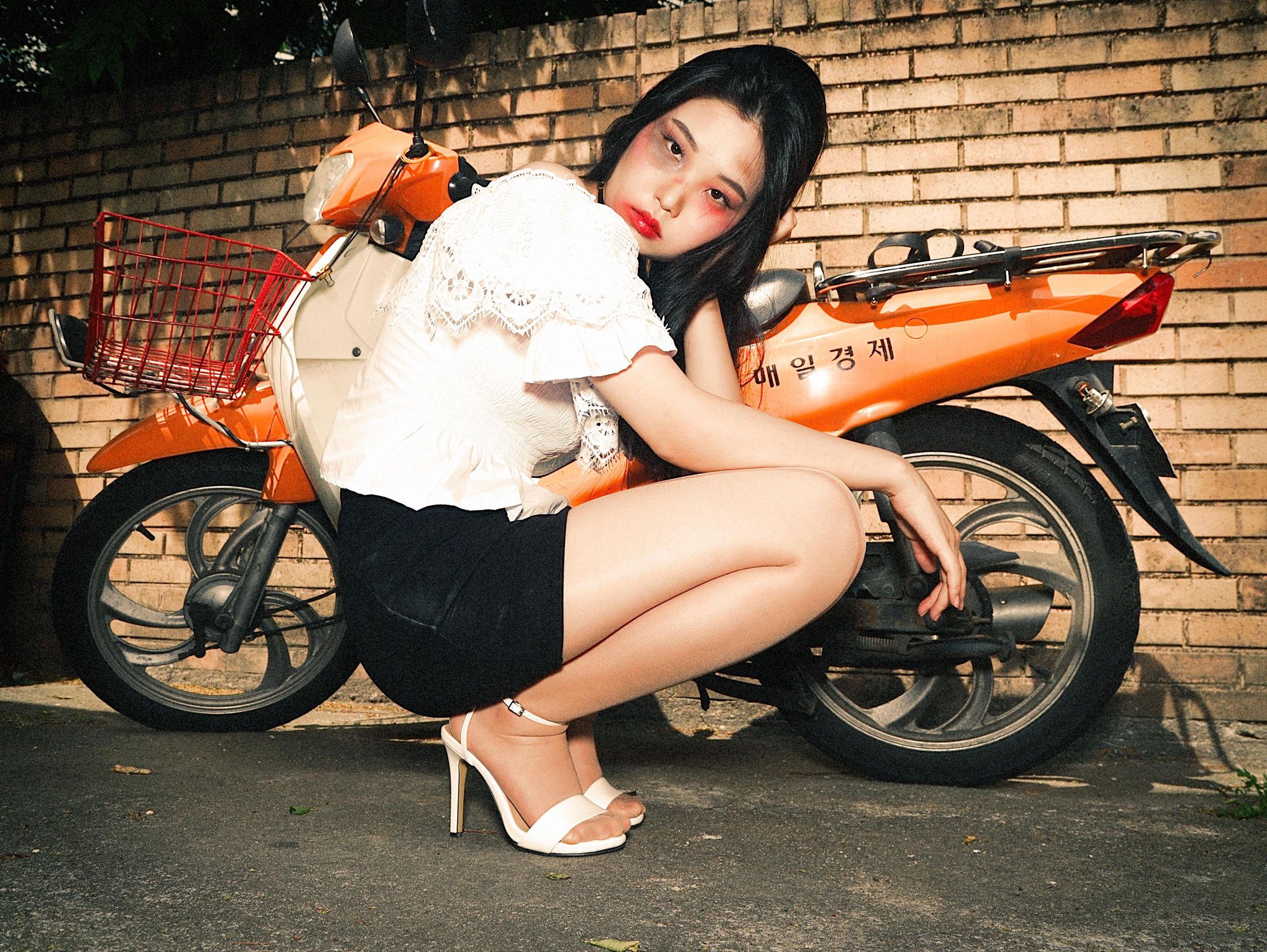[May] Photographer documents Korea’s changing culture through street fashion
Date May 20, 2022
 Michael Hurt / Courtesy of Michael Hurt
Michael Hurt / Courtesy of Michael Hurt
Michael Hurt wants you to look around Korea’s grimiest alleys. You don’t have to visit them, fortunately, because he captures the scenes with his camera.
“I've long realized what an amazing space the Korean street is, and how it spatially recapitulates and visually re-presents the decades of compressed development that defines Seoul. The Korean street is one of the most fascinating and visually explosive smashing together of seemingly disparate elements from pre-, post-, and hypermodernity into a singular visual whole that makes a lot of visual sense when you get out there and shoot it,” said Hurt, who calls himself a street fashion photographer as well as a visual sociologist.”
“Basically, Seoul’s alleys contain all of the coolest kinds of backdrops you can imagine all compressed into the most efficiently small range of space. In a single street, you can get the rough and jagged concrete wall of a Japanese era building, the scratchy blue paint of the metal front doors of 1960s-built houses, glass and steel from a newer modern building, and wet and dirty and grimy sewer gratings in front of trash piles.”
To make these settings pop, he often shoots attractive young models, who may be dressed and illuminated posing provocatively under professional, studio-quality lighting. His unique portraits, which bring out the contrast of rough versus smooth, old versus new, dilapidated versus pretty, reveal the values that have changed during the country’s compressed development.
“The Korea in which these youth live in is a very hypermodern, malleable social space. Categories and identities and even faces and places are constantly shifting and can be replaced, swapped, remixed, or even denied,” he said. “We're in the midst of a hypermodern shift in terms of values and the malleability of identity and social roles.”
Hurt uses big words to describe his oeuvre, which isn’t surprising since he is also an adjunct professor at Korea National University of Arts. He uses photography in his academic career as an ethnographic tool, collecting data and making visual declarations that are also part artistic statements.
“Visually and aesthetically – and even academically – I like to point out new things and bust apart ossified, old-fashioned and lazy ways of representing things,” he said.
His photography also helps him access elusive communities of digital-based youth subcultures, as he can provide high-quality images for those who want to show their best sides on social media.
 Courtesy of Michael Hurt/Seoul Street Studios
Courtesy of Michael Hurt/Seoul Street Studios
Hurt first came to Korea in 1994, back when the country was more rigid and hierarchical. After staying for two years, he came back in 2002 to find a society that was changing and becoming more connected technologically, with the fastest broadband connection on Earth.
“This is the kind of techno social shift that completely changes the way people live here and completely changes society into a much more hypermodern, malleable one,” he said.
Of all the causes for this change, he points not only to internet connectedness, but also the compressed, layered environment that Koreans have grown up in. Different eras of development are easily observed side by side, or often one on top of the other.
“Cool kids today are decompressing and making new sense of the deep histories and complex stories that are wrapped into and compressed into Korean social space. It's a unique thing if you can live in a supermodern, skyscraper-type structure yet hear the guy in the blue truck blaring out the prices of melons and onions at six every morning,” he said.
He picked up photography as soon as he returned to Korea, and by 2006, he was shooting street fashion photos similar to his work today. He believes he is the first foreign street photographer in Korea to build a long-term, multi-year body of work.
He also does a lot of studio work and says he likes to bring a bit of street to the studio, as well as a bit of the studio to the street. And he is serious about fashion photography too, having attended every single Seoul Fashion Week since 2007, except for one time in 2012 when he was hospitalized following a car accident.
“Basically, I like to joke, that it takes internal bleeding to keep me off the streets with my camera,” he said.
His work still has its critics, as there are many people who have trouble seeing the value in his chosen settings, or are bothered by the appearance of the people in the photos.
But Hurt doesn’t care.
“Many people don't like my pictures or my photography because of elements that often bother people, and they react viscerally and say I'm some kind of bad or evil person. I like that because it means I am making the kind of photographs that will outlive me,” he said. “Because I feel like if you're making forgettable photographs, then you might as well just go get another hobby. But if you're making visual statements that punch through the wall of the white noise in our overly stimulated popular culture, then you're doing something worthy of your time and effort.”
He has also observed that as he continues his work, his online following has shifted from largely male to more female-based.
“I've noticed that the more artistic and punchy my photos are, the more my follower demographic shifts from male to female, as male followers who are just looking for pictures of hot girls in bikinis or something give up and are replaced with female followers who pick up on the kind of social/aesthetic statements I'm making.”
**If you have any questions about this article, feel free to contact us at kocis@korea.kr.**

The Ministry of Culture, Sports and Tourism's "Korea Here & Now" work can be used under the condition of "Public Nuri Type 1 (Source Indication)."




